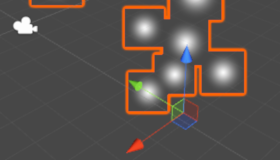

ThinkingParticles 7 is available now for 3ds Max 2020 and above. In addition, there have been overall improvements in memory management and multi-threading, with cebas citing a speed boost of “up to 5x” in complex fragment and rigid body sims. Performance improvements include GPU sprites, a new DirectX-accelerated viewport display mode intended to improve interactivity when working with large particle simulations. The update also introduces ShapeElement, which automatically extracts particle meshes from mesh elements within an object, described as a “more optimised” alternative to the existing fragment node.

Other changes include a new Cellular node for generating procedural 3D noise that can be used to control simulations, including Circular, Chip and Voronoi patterns.

New Cellular node, GPU sprites and overall performance improvements

The MPM solver is backed up by FlowData, a new node for querying and setting flow parameters for MPM and SPH solver data, capabile of affecting MPM clusters, density and sleep states. The initial release supports two specific material types, sand and snow, with “more to follow”.Ĭebas describes MPM as enabling users to “simulate highly deformable objects with great stability and a low of simulation artifacts”. The first update to get a full new version number for almost seven years, thinkingParticles 7 further expands the range of materials that the plugin can simulate.Īs well as SPH, thinkingParticles’ Flow operator now integrates a grid-based MPM (Material Point Method) solver for recreating anything “from hydro fluids rubber to rock solid metals”. New in thinkingParticles 7: MPM-based simulation of granular fluids like snow and sand


 0 kommentar(er)
0 kommentar(er)
